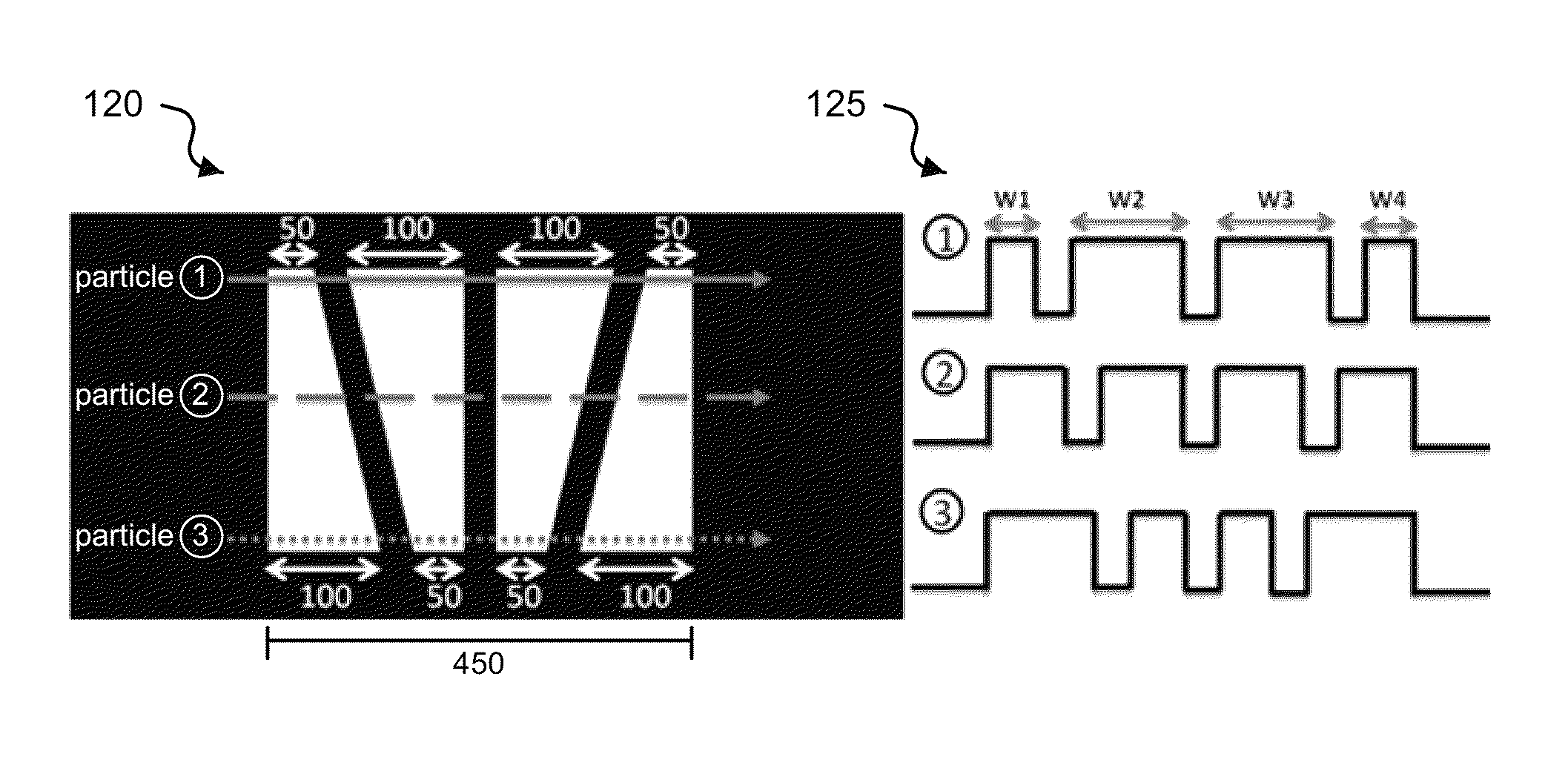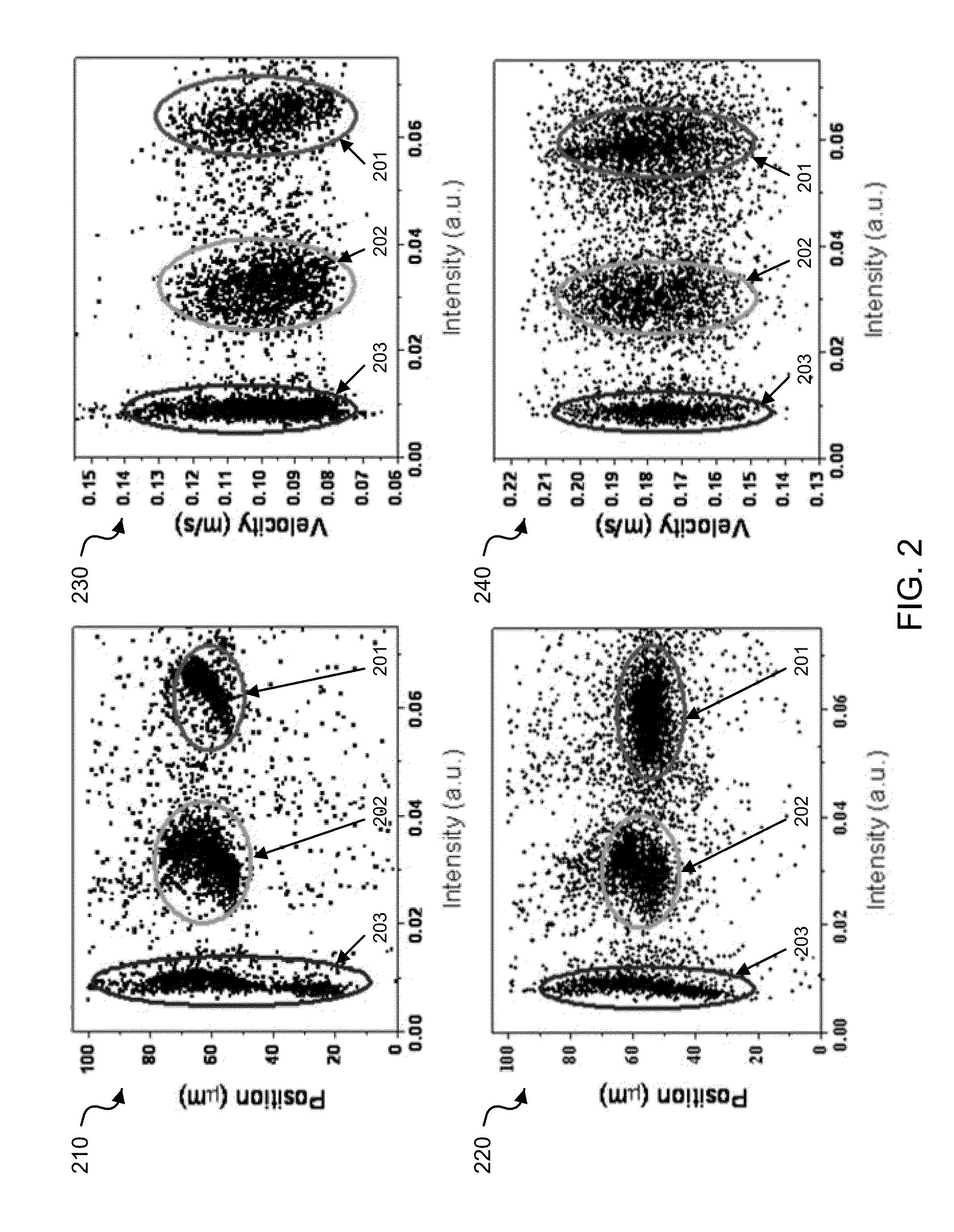Optical space-time coding technique in microfluidic devices
a microfluidic device and optical space-time coding technology, applied in the field of microfluidics, can solve the problems of inconvenient operation, high design difficulty, and inability to achieve particle confinement in the out-of-plane direction, and achieve repeatable and controllable device characteristics, low design throughput, and easy operation. the effect of simple and convenient operation
- Summary
- Abstract
- Description
- Claims
- Application Information
AI Technical Summary
Benefits of technology
Problems solved by technology
Method used
Image
Examples
Embodiment Construction
[0041]Microfluidic technologies can be used to enable highly integrated analytical devices to perform several different functions on the same substrate, chip, or platform. For example, microfluidic-based devices can facilitate the flow of suspended particles in a microfluidic channel directed in a stream to an interrogation area where optical or electrical characterizations is performed to reveal the intrinsic properties of the sample. Such optical or electrical characterization techniques can include optical scattering, fluorescence, Raman signals, and impedance detection. For example, based on the detected signals, particle separation methods may be applied to direct the particles to the designated downstream channels. Such methods may use various mechanisms including, e.g., hydrodynamic, dielectrophoretic, optical, acoustic or magnetic mechanisms. In some implementations in which the particles include living cells, cell sorting can be used to isolate subpopulations of cells from ...
PUM
| Property | Measurement | Unit |
|---|---|---|
| large angle scattering | aaaaa | aaaaa |
| wavelengths | aaaaa | aaaaa |
| height | aaaaa | aaaaa |
Abstract
Description
Claims
Application Information
 Login to View More
Login to View More - R&D
- Intellectual Property
- Life Sciences
- Materials
- Tech Scout
- Unparalleled Data Quality
- Higher Quality Content
- 60% Fewer Hallucinations
Browse by: Latest US Patents, China's latest patents, Technical Efficacy Thesaurus, Application Domain, Technology Topic, Popular Technical Reports.
© 2025 PatSnap. All rights reserved.Legal|Privacy policy|Modern Slavery Act Transparency Statement|Sitemap|About US| Contact US: help@patsnap.com



